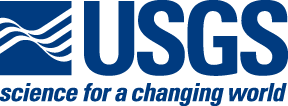

U.S. GEOLOGICAL SURVEY
Scientific Investigations Report 2004-5296—ONLINE ONLY
Send questions or comments about this report to the author, Michael Land (mtland@usgs.gov) 858-637-6868.
This report is available in Portable Document Format (PDF).
View the full report online in PDF (5.7 MB)
Download a printable version (9.2 MB)
Figure 3 is a 11 x 17 printable pdf
file (15MB)
Figure 4 is a 11 x 17 printable pdf
file (634KB)
ABSTRACT
A new park is being considered for the confluence of the Los Angeles River
and the Arroyo Seco in Los Angeles County, California. Components of the park
development may include creation of a temporary lake on the Los Angeles River,
removal of channel lining along part of the Arroyo Seco, restoration of native
plants, creation of walking paths, and building of facilities such as a boat
ramp and a visitor center. This report, prepared in cooperation with the Mountains
Recreation and Conservancy Authority, delineates the geological, hydrological,
and biological issues that may have an impact on the park development or result
from development at the confluence, and identifies a set a tasks to help address
these science issues.
Geologic issues of concern relate to surface faulting, earthquake ground motions,
liquefaction, landsliding, and induced seismicity. Hydrologic issues of concern
relate to the hydraulics and water quality of both surface water and ground
water. Biological issues of concern include colonization-extinction dynamics,
wildlife corridors, wildlife reintroduction, non-native species, ecotoxicology,
and restoration of local habitat and ecology. Potential tasks include (1) basic
data collection and follow-up monitoring, and (2) statistical and probabilistic
analyses and simulation modeling of the seismic, hydraulic, and ecological processes
that may have the greatest impact on the park. The science issues and associated
tasks delineated for the proposed confluence park will also have transfer value
for river restoration in other urban settings.
Abstract
Introduction
Objectives
Scope
Description of study area
Design features of Confluence Park
Geology
Geologic overview of the study area
Geologic Setting
Geologic Units
Geologic Structures
Geological Issues
Surface Faulting
Earthquake Ground Motions
Liquefaction
Landsliding
Reservoir-Induced Seismicity
Hydrology
Hydrologic overview of the study area
Hydrological Issues
Surface-water hydraulics
Surface-water quality
Ground-water hydraulics
Ground-water quality
Biology
Biologic overview of the study area
Biological setting
Biological monitoring and modeling
Biological Issues
Wildlife Corridors
Wildlife Colonization/Reintroduction
Non-Native and Pest Species
Ecotoxicology
Options for Restoration of Local Habitat and Ecology
Summary and Discussion
References Cited
For more information about USGS water activities in California, visit the USGS California District home page.
Document Accessibility: Adobe Systems Incorporated has information about PDFs and the visually impaired. This information provides tools to help make PDF files accessible. These tools convert Adobe PDF documents into HTML or ASCII text, which then can be read by a number of common screen-reading programs that synthesize text as audible speech. In addition, an accessible version of Acrobat Reader 5.0 for Windows (English only), which contains support for screen readers, is available. These tools and the accessible reader may be obtained free from Adobe at Adobe Access.
| AccessibilityFOIAPrivacyPolicies and Notices | |
 |
|